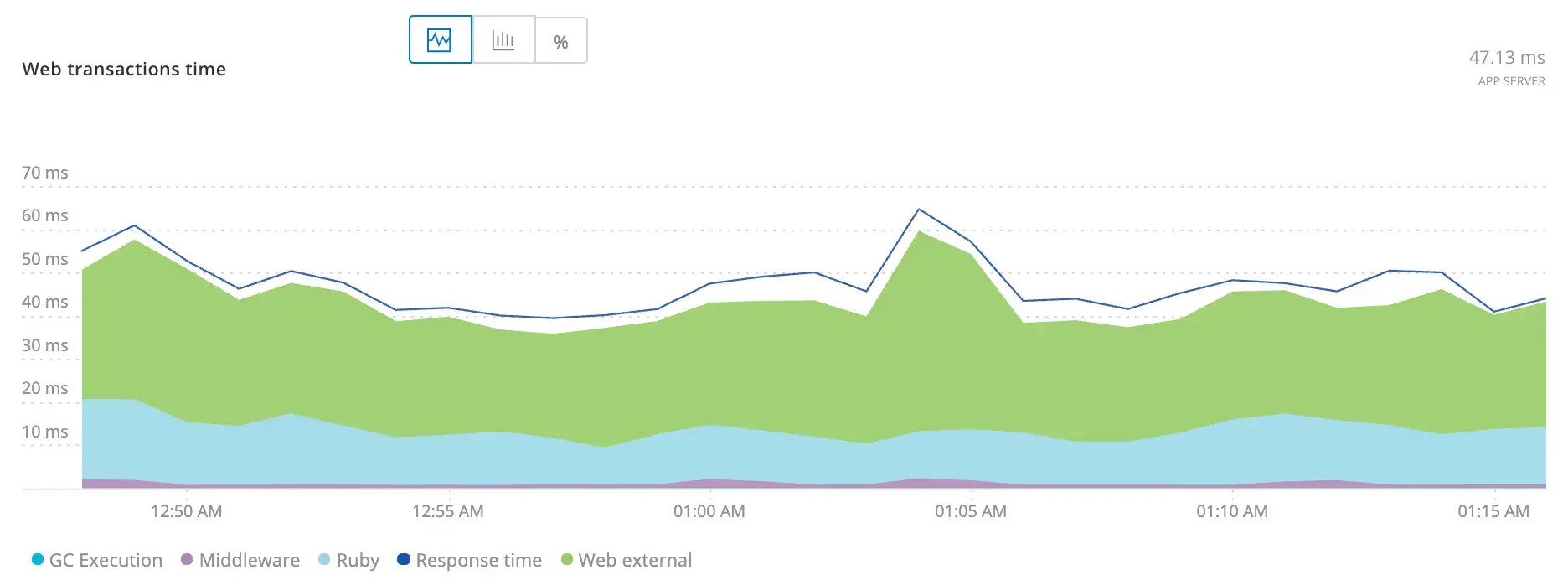New Relic for Java includes a set of API methods for custom instrumentation of asynchronous activity. This is most useful to instrument asynchronous activity in unsupported frameworks, but you can also use the API to add instrumentation to supported frameworks. This document explains how asynchronous activity occurs, and how New Relic monitors async work.
Asynchronous operations
With a synchronous programming model, programming tasks are usually executed in a specific order. One task must complete before the next task begins, and each task blocks the next task from completing.
Asynchronous programming uses a non-blocking model, so that tasks can be run in parallel. Tasks executed asynchronously are completely independent of each other in their execution and initialization. Because asynchronous code doesn't execute in a specific order, the server's full processing power can be used more efficiently, and the app's throughput increases.
Async and thread-switching
For applications that use asynchronous processing, thread-switching is when a program or task switches from one thread to another. Understanding these asynchronous interleavings can help you decide which methods should be instrumented.
Here is an example method with a controller that makes external requests in parallel. These requests execute asynchronously, so each request executes independently of each other and getScoreAsync() returns immediately after being called. This allows the requesting thread to continue making requests while getScoreAsync() makes an external call and sends a reply.
@ResponseBody@RequestMapping("getScores", method = RequestMethod.Get produces = "text/plain")public String getCreditScores(@RequestParam(name = "uids") uids) { return Arrays.stream(uids.split(",")) .parallel() .map(Integer::valueOf) .map(uid -> getScoreAsync(uid)) .collect(Collectors.toList());}Some of these requests will finish before others. Some might even finish after the requesting thread has moved on to other tasks:

In the UI, on the trace details waterfall view, the UI displays asynchronous activity as overlapping in the horizontal x axis.
Async and response time
Response time is defined as the duration of a transaction from the perspective of the requester. For asynchronous applications, the response time is often less than the total transaction time. This is because the methods don't have to wait for all preceding methods to complete before returning. Because tasks can be deferred, the application can take advantage of its limited resources and process things more quickly.
The chart's response time line gives you more insight into the perceived behavior and speed of your application than does the total web transaction time:

one.newrelic.com > All capabilities > APM & services > (select an app) > Summary: On the APM Summary page, asynchronous activity in a Java app can result in the response time (the blue line) being less than the total transaction time. This is because the methods don't have to wait for all preceding methods to complete before returning.
Custom instrumentation with the async API
To implement custom instrumentation of async work, see the Java agent async API guide. For general information on how to use the Java agent API, see Java agent API guide.